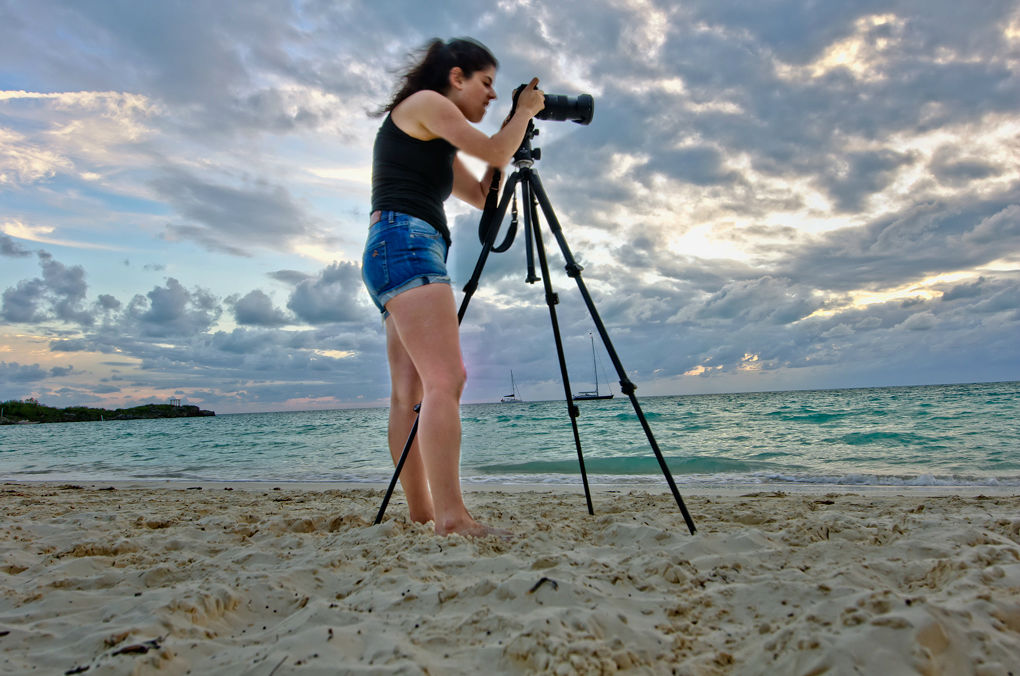The Big Three Nikon Lenses for Vacation Travel
The Big Three Nikon Lenses for Vacation Travel
When photography is not the main purpose of a trip, lenses compete for space in carry on luggage with other essential items like books, food, a laptop and spare clothes in case the packed luggage gets lost in flight.
 Just as there is a “big three” for professional photographers who use Nikon FX cameras—Nikkor 14-24 f./2.8; Nikkor 24-70 f./2.8; and the Nikkor 70-200 f./2.8 VR, there should be a “big three’ for travel photographers who want good pictures with their FX Nikon as well as a happy family vacation. For me, the “big three” Nikon lenses for vacation travel are the Nikkor 17-35mm f./4 VR; the 60mm f./2.8 Micro; and the new Nikkor 80-400 f./4.5-5.6 VR lens.
Just as there is a “big three” for professional photographers who use Nikon FX cameras—Nikkor 14-24 f./2.8; Nikkor 24-70 f./2.8; and the Nikkor 70-200 f./2.8 VR, there should be a “big three’ for travel photographers who want good pictures with their FX Nikon as well as a happy family vacation. For me, the “big three” Nikon lenses for vacation travel are the Nikkor 17-35mm f./4 VR; the 60mm f./2.8 Micro; and the new Nikkor 80-400 f./4.5-5.6 VR lens.
The 17-35mm is perfect for street photography, landscapes and cityscapes. This lens lives on my camera most of the time when I am touring. I have had success taking handheld shots with this lens at shutter speeds as slow as ¼, which I find remarkable.
The 60mm f./2.8 Micro lens doubles as a bridge between 35mm and 80mm and as a lens for macro shots of flowers, textural patterns, art photography, food and small animals. It is a nice portrait lens as well with good bokeh at f./2.8.
The new Nikkor 80-400 f./4.5-5.6 VR lens is a great third lens for carry on luggage. This lens is a good alternative to the Nikkor 70-200 f./2.8 and the Nikkor 200-400 f./2.8 VR lens. Both of these lenses are big, heavy and take up a lot of space in a carry on. The 200-400 lens requires a bigger tripod than any of the other lenses, which adds to the weight of the checked luggage as well.
The early reviews of the new 80-400 lens have been very good. It is obviously not as tack sharp as either the 70-200 lens or the 200-400 lens, but the analysis in DP Review shows that it has greater sharpness than most non-pro lenses. Nor is the 80-400 lens as fast as the two pro lenses it supplants, but the new VR allows 3 or 4 stops down for handheld shots. (Photographers should use a tripod on shots with anything more than 100 mm anyway.) In any event, a very sharp and fast lens for the size, weight and price of the Nikkor 80-400 is not a reasonable expectation.
The only concern about the new Nikkor 80-400 lens is its absence from the list of Nikon’s recommended lenses for the D800. This list was updated after the 80-400 became available and this lens is still not on the recommended list. It is still too soon for reliable independent data about how this lens performs on the D800, so I caution D800 users to test this lens on your D800 before you travel with it.
